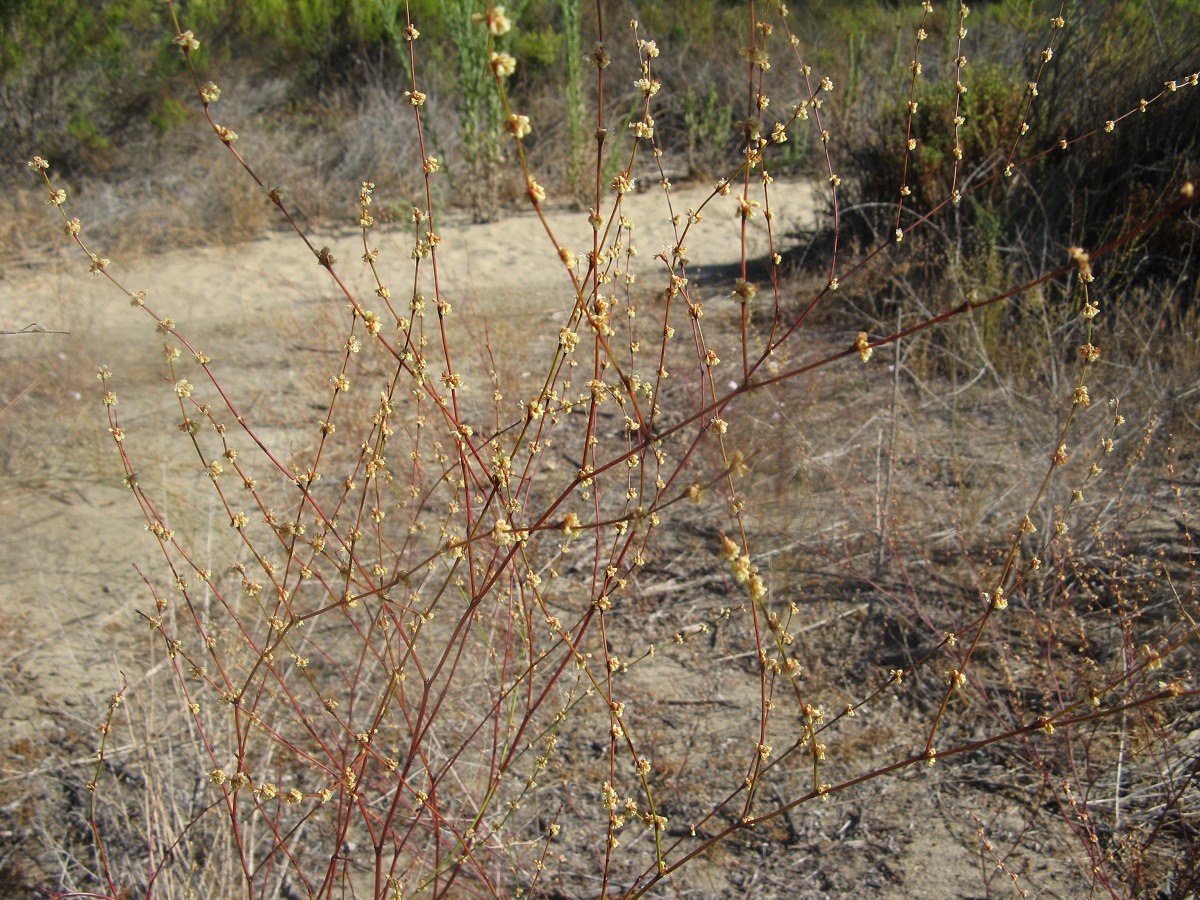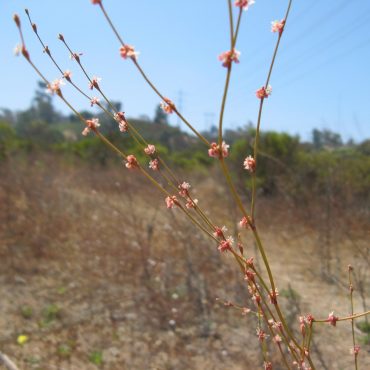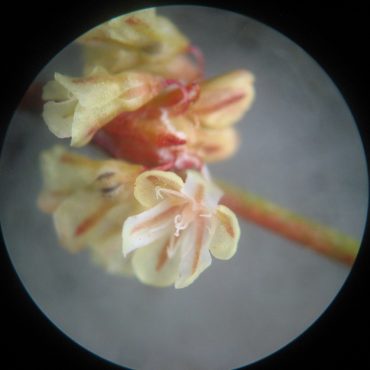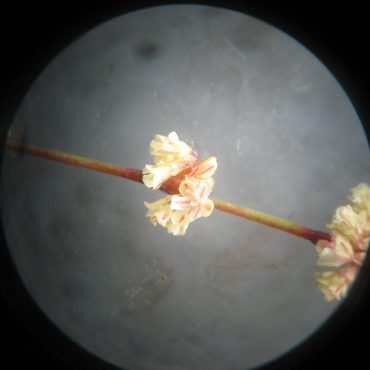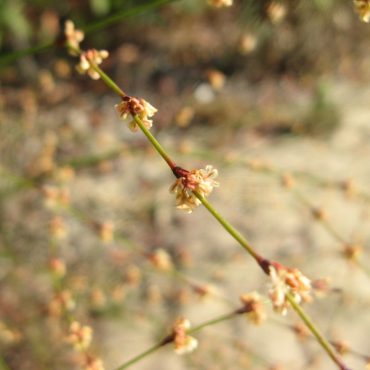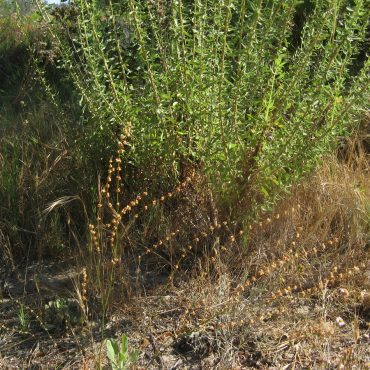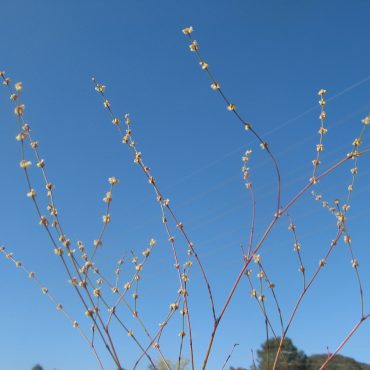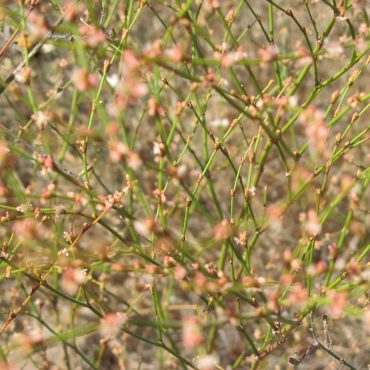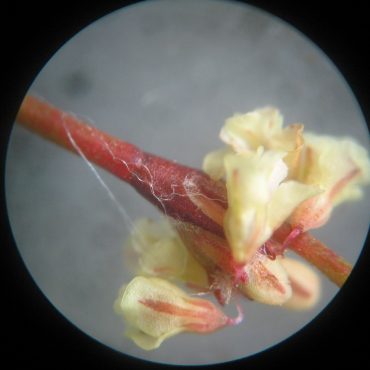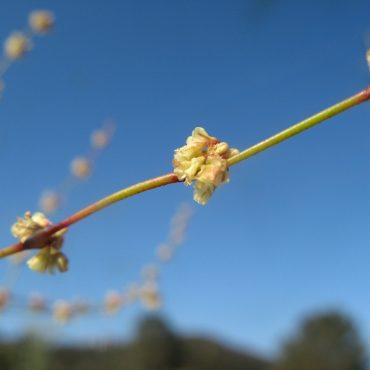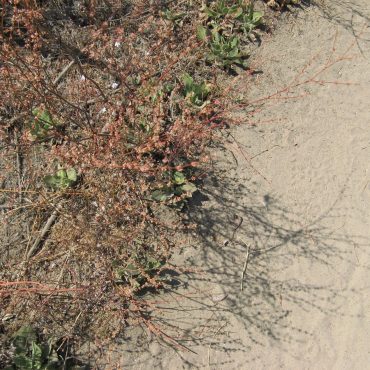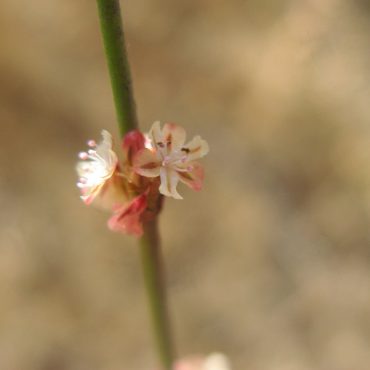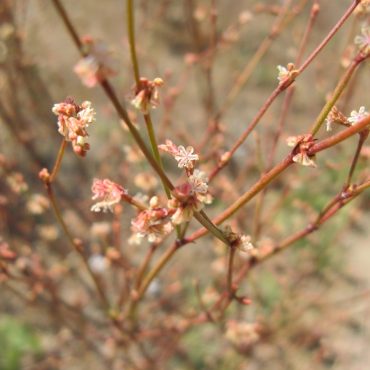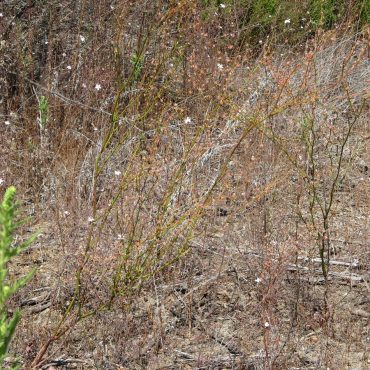Although slender buckwheat (Eriogonum gracile) may grow two feet high and occur in large numbers, it is such an insubstantial plant that it disappears into the background and is rarely noticed. However, when seen against a plain background in the right light, a magical plant appears, with golden-pink branchlets decorated with glowing pom poms.
Slender buckwheat is a California native with limited distribution outside the state. It prefers sandy open areas of sage scrub and chaparral. In The Reserve, in late summer, blooming plants can be found in East Basin, east of the Santa Carina trailhead.
Like the other buckwheats slender buckwheat provides larval food for several small butterflies, especially blues and hairstreaks.

